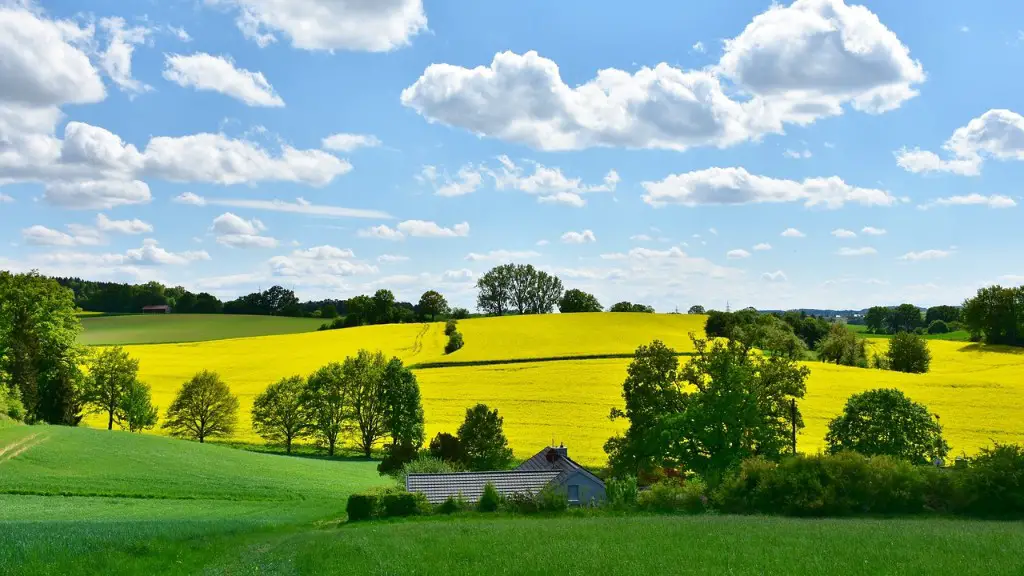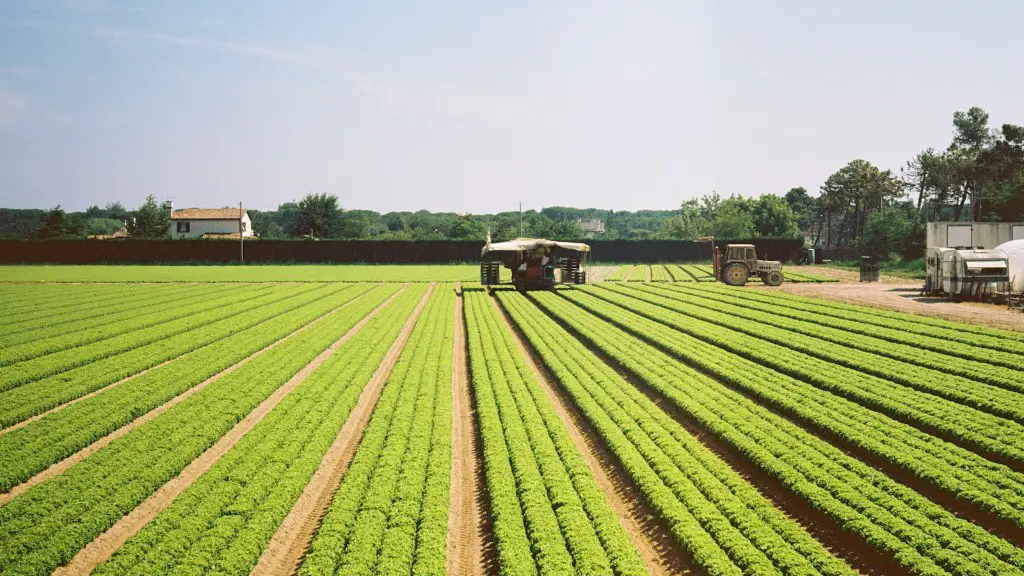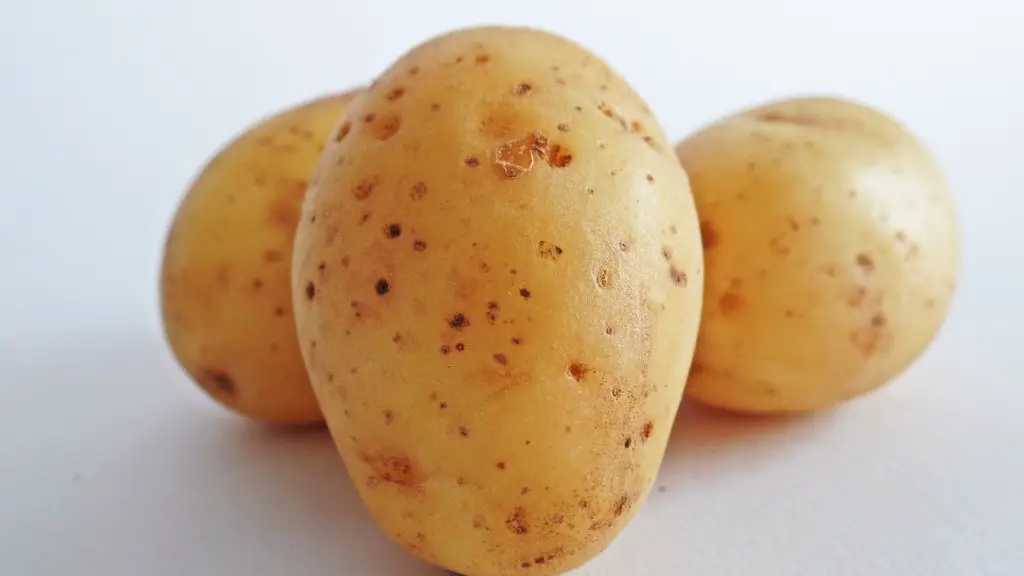Regenerative agriculture is a type of farming that focuses on rebuilding the soil. This type of agriculture is important because it can help to improve the quality of the soil, make it more resistant to pests and diseases, and improve water retention.
There are many reasons why regenerative agriculture is important. One reason is that it can help to reverse climate change. Regenerative agriculture practices help to store carbon in the soil, which can help to offset the greenhouse gases that are released into the atmosphere. Additionally, regenerative agriculture can help to improve water quality and reduce water pollution. The practices involved in regenerative agriculture can also help to increase crop yields, while using fewer inputs like water and fertilizer. Ultimately, regenerative agriculture can help to create a more sustainable and environmentally friendly food system.
What is regenerative agriculture and why is it important?
Regenerative agriculture is a type of farming that focuses on rebuilding soil organic matter and restoring degraded soil biodiversity. The goal of regenerative agriculture is to improve the water cycle, reverse climate change, and improve the quality of the environment.
Regenerative agriculture is a type of farming that focuses on rebuilding the soil. This type of agriculture has many benefits for farmers, including reducing costs, improving crop yield and quality, and increasing resilience to market volatility and extreme weather events. Additionally, regenerative agriculture can open up new green revenue streams for farmers by rewarding them for things like carbon capture and storage in the soil.
What are the impacts of regenerative farming
Regenerative farming has many benefits beyond improving soil health and helping to fight climate change. For example, improving the soil increases fertility in a sustainable way, and also tends to improve water infiltration. This can help to mitigate the effects of drought and flooding, and make farms more resilient to extreme weather events. In addition, regenerative farming can help to restore degraded ecosystems and promote biodiversity.
Regenerative agriculture is a type of agriculture that focuses on rebuilding the soil. One of the primary goals of regenerative agriculture is to reduce tilling for promoting healthy soil. It does not involve using synthetic fertilizers because it disrupts the natural phenomena of nutrient absorption by the plants and creates disequilibrium of soil microorganisms.
Is regenerative agriculture good for the environment?
With proper management, regenerative agriculture can play a role in reducing nitrogen losses and rebuilding organic soil carbon and nitrogen stocks. This would help to address the problematic nitrogen cycle in our modern agricultural system.
Cover crops, compost, crop rotation, and reduced tillage are all excellent methods for sequestering carbon and reversing climate change. By using these methods, we can actually sequester more carbon than is currently emitted, tipping the needle past 100% to reverse climate change.
How is regenerative agriculture better than regular farming?
Regenerative farming is a great way to improve the resources used in farming, without destroying or depleting them. Soil health is a big focus, but also water management, erosion control, cover cropping, and the well-being of all who share the land.
Sustainable farming practices are important for preserving our planet’s resources, but regenerative farming has the potential to do even more. Healthy soil is critical for sequestering carbon and increasing the ability of our planet to survive. Regenerative farming practices have the potential to improve soil quality and farm profitability at a much faster pace, making them an important tool in the fight against climate change.
What are the 5 principles of regenerative agriculture
Regenerative farming is a type of farming that focuses on rebuilding the soil. The 5 principles of regenerative farming are:
1. Soil Armor: Soil armor is a layer of living plants that cover the soil. This helps to protect the soil from erosion and keep it healthy.
2. Diversity: diversity is important in regenerative farming because it helps to ensure that the soil contains all the nutrients that plants need to grow. A diverse mix of plants also helps to create a more resilient ecosystem.
3. Continual Live Plant/Root: To keep the soil healthy, it is important to have plants growing in it all the time. This helps to aerate the soil and keep it from compacting.
4. Livestock Integration: In regenerative systems, livestock are integrated into the farm in a way that mimics nature. This means that they are allowed to graze on pasture, which helps to fertilize the soil.
5. Minimizing Soil Disturbance: Soil disturbance should be minimized in regenerative systems to help protect the delicate balance of microbes in the soil.
Regenerative farming is an agricultural practice that emphasizes nutrient-dense food crops and soil health. Moreover, such practices focus on not harming the land and even help to improve its quality afterwards! This type of farming is economically and environmentally friendly, making it a great option for those looking to improve their land while also producing healthy food.
What are the 4 principles of regenerative agriculture?
There are four basic principles of sustainable agriculture which promote biodiversity:
1. Cover crops and crop rotation
2. Eliminate or decrease tillage
3. Reduce the use of artificial fertilizers
4. Use regenerative grazing management for livestock
Sustainable agriculture is a type of agriculture that focuses on three main goals: environmental health, economic profitability, and social equity. A variety of philosophies, policies and practices have contributed to these goals, but a few common themes and principles weave through most definitions of sustainable agriculture.
The main principles of sustainable agriculture include working with nature, using natural resources efficiently, and diversifying farm operations. Sustainable agriculture also includes regional food systems, which focus on producing food locally and supporting small farmers.
Sustainable agriculture is important because it offers a way to produce food that is good for the environment, the economy, and society.
How regenerative farming could save the world
Regenerative farming practices can help to reduce emissions from agriculture and can also help to turn croplands and pastures into carbon sinks. Carbon sinks are environments that naturally absorb CO2 from the atmosphere. regenerative farming practices can help to improve soil health, reduce erosion, and improve water retention, all of which can help to reduce emissions from agriculture.
Regeneration is the process of improving the environmental quality of an area by redeveloping derelict land and buildings and removing contaminants from former industrial sites. This process often improves the aesthetic quality of an area as well as the environmental quality, making it more attractive to potential residents and businesses.
How can we encourage regenerative agriculture?
There are a lot of ways that you can support regenerative farming. You can donate to regenerative farming non-profits and research organizations, purchase regenerative clothing, or shop locally and support regenerative farmers in your area. All of these things will help to promote and support regenerative farming practices.
When it comes to regenerating health, there are three general categories that options tend to fall into: passive, active, and manual. As the name implies, passive regeneration is an constant, effortless process that gradually tickles up your health bar over time. Active regeneration, on the other hand, requires you to put in some work – usually in the form of button presses – in order to get the process going. And then there’s manual regeneration, which throws all health regeneration rules out the window and simply asks that you find and use health items in order to recover.
Conclusion
There are many reasons why regenerative agriculture is important. It helps to restore and rebuild healthy soil, which is essential for growing crops. It also helps to sequester carbon, which can help to combat climate change. Additionally, regenerative agriculture practices can help to improve water quality and reduce water pollution.
Regenerative agriculture is important because it helps to reverse climate change, heal the soil, andImprove water quality.





